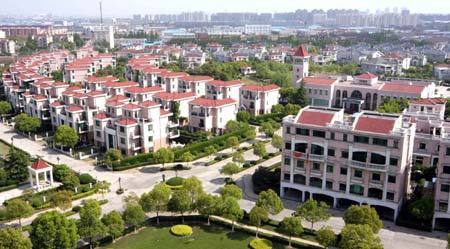IX-1 Question: China is now accelerating its urbanization. What development pattern will China choose? What problems will arise in the process of urbanization and how will they be solved?
A: China has been witnessing an accelerated pace of urban development since 1978. Since 1992, in particular, urbanization has increased by 1.19 percent annually, tripling the world's average rate for the same period. According to statistics, in 2005, China had 108 cities with a population between 500,000 to 1 million. Among them, 75 cities had over 1 million residents and 25 had more than 2 million, with the population exceeding 4 million in 13 cities. The urbanization rate reached 42.99 percent.
Urbanization patterns vary among different countries in the world. Typical for European countries is a pattern with high concentration of industrial activities and human settlements within limited urban space. This pattern is saving- and efficiency-oriented in land use for urban construction. The United States is representative of another pattern, which features a lower density of population and higher level of energy consumption. Facing the challenges of big population, dwindling inhabitable land, water resources scarcity, increasing rural-to-urban migration and uneven distribution of migrant population, China is set to follow the pattern with high concentration in urban development, in order to leave plenty of farmland and development space for coming generations. If China followed the pattern adopted by the United States, it would have to live on imported food.
China's goal is to increase the rate of urbanization from 42.99 percent in 2005 to around 70 percent by 2050, a rise of 1 percentage point a year, and consequently, 12 million people will move from rural to urban areas annually. That means that with such a fast pace, a huge cost can hardly be avoided in China's urbanization process, and its social and economic structure will be greatly affected. In the coming decades, China will witness three population peaks¡ª-peak of total population, peak of working-age population and peak of aged population. Meanwhile, it will also see excessive consumption of energy and other resources, and worsening eco-environmental deterioration in urban areas nationwide, though situation will be improved in certain areas. Plus, the development speed and quality of the infrastructure cannot meet the need of cities. All these will put tremendous pressure on China's urbanization.
All these challenges are inevitable in the process of urbanization, and they can be resolved only by adopting the right methods for development. For this purpose, China will accelerate the improvement of its urban ecological environment. By 2050, it will strive to realize the objective of zero, or even negative, growth in the consumption rate of energy and resources. In the meantime, China will promote the application of ICT (information and communication technology) and digital technologies in urban areas, improve urban infrastructure, and make urban areas new driving forces for national economic growth.

(China.org.cn)